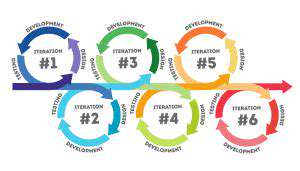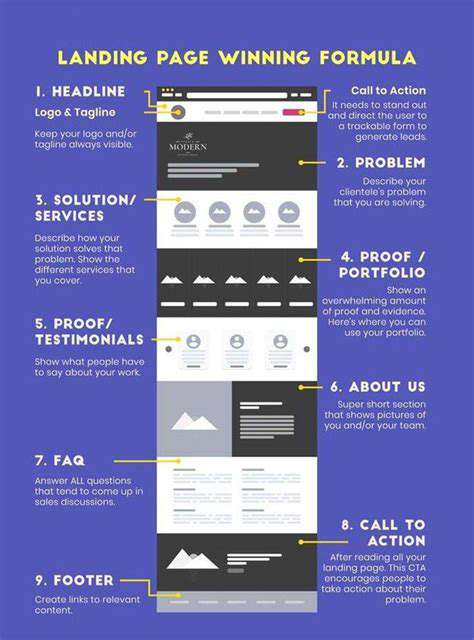Email Deliverability: Ensuring Your Emails Land in Inboxes
Understanding Sender Reputation
Email providers assign every sender a reputation score that directly impacts deliverability. Your sender reputation acts like a credit score for your email domain - the higher it is, the more likely your messages will land in inboxes rather than spam folders. This scoring system evaluates multiple factors including historical sending patterns, recipient engagement metrics, and technical authentication.
Building and maintaining this trust requires ongoing attention. Email providers constantly update their algorithms, making it crucial to stay informed about current best practices. Regular monitoring of deliverability metrics provides early warning signs of potential reputation issues before they significantly impact your email program.
Email List Hygiene and Quality
Your subscriber list quality forms the foundation of a positive sender reputation. Implement these key practices:- Remove inactive subscribers (those who haven't engaged in 6-12 months)- Immediately process unsubscribe requests- Verify new email addresses before sending- Segment audiences for targeted content delivery
List decay occurs naturally over time, so schedule quarterly list audits. Maintaining a clean list with engaged subscribers significantly reduces bounce rates and complaint metrics, both of which negatively impact reputation scores.
Email Content and Design
Modern spam filters analyze both the technical structure and linguistic patterns of email content. To avoid triggering spam filters:- Write clear, conversational subject lines (avoid excessive punctuation or ALL CAPS)- Maintain a balanced text-to-image ratio (aim for at least 60% text)- Include visible unsubscribe links- Avoid spam trigger words and phrases
Simple, well-structured emails with valuable content consistently outperform overly designed templates in both deliverability and engagement metrics. Focus on providing genuine value rather than flashy design elements.
Engagement and Interaction Rates
Email providers prioritize engagement signals when evaluating sender reputation. Key metrics include:- Open rates (indicate subject line effectiveness)- Click-through rates (measure content relevance)- Reply rates (signal two-way communication)- Spam complaint rates (should remain below 0.1%)
Engagement patterns create a feedback loop - positive interactions improve deliverability, which leads to better visibility and higher future engagement.
Deliverability Best Practices and Tools
Technical implementation significantly impacts deliverability:- Authenticate emails using SPF, DKIM, and DMARC protocols- Warm up new IP addresses gradually- Maintain consistent sending volumes- Monitor blocklists and blacklists
Several deliverability tools provide valuable insights:- GlockApps for inbox placement testing- Mail-Tester for spam score analysis- MXToolbox for blacklist monitoring- Google Postmaster Tools for Gmail-specific data
Monitoring and Adapting Your Strategy
Effective deliverability management requires ongoing adjustment:- Track metrics weekly to identify trends- A/B test different approaches- Adjust frequency based on engagement- Update content strategies quarterly
The most successful email programs treat deliverability as an ongoing optimization process rather than a one-time setup. Regular adjustments maintain strong sender reputation over time.

Technical Best Practices for Reliable Deliverability

System Design
Building a reliable email infrastructure requires careful planning from the ground up. Redundancy should be built into every critical component, from servers to network connections. Implement queuing systems that can handle temporary delivery failures and schedule automatic retries.
Design your system with these principles:- Modular architecture for independent scaling- Clear failure isolation boundaries- Automated failover mechanisms- Capacity planning for peak loads
Component Selection
Choose email infrastructure components based on:- Proven deliverability track records- Vendor reputation in the industry- Compatibility with your tech stack- Scalability for future growth
Invest in commercial-grade solutions rather than trying to build critical components in-house. The expertise and reliability of established providers often justifies the cost.
Testing and Validation
Implement a comprehensive testing framework:- Functional testing for core features- Load testing for performance validation- Failure scenario testing- Deliverability testing across major ISPs
Automated testing should run with every code deployment to catch issues before they reach production. Maintain separate testing environments that mirror production configurations.
Maintenance and Monitoring
Proactive maintenance prevents most deliverability issues:- Regular security updates- Performance optimization- Capacity monitoring- Log analysis
Implement monitoring for these critical metrics:- Queue lengths- Delivery success rates- Bounce patterns- Blacklist status
Real-time alerting for abnormal patterns enables quick response to potential deliverability issues before they escalate.

Read more about Email Deliverability: Ensuring Your Emails Land in Inboxes
Hot Recommendations
- Personalizing Email Content with User Behavior
- Geofencing for Event Attendance Tracking
- Reputation Management on Social Media
- UGC Beyond Photos: Videos, Testimonials, and More
- The Future of Data Privacy Regulations
- Accelerated Mobile Pages (AMP) Benefits and Implementation
- The Future of CRM: AI and Voice Integration
- Google Ads Smart Bidding Strategies: Maximize Value
- Common A/B Testing Pitfalls to Avoid
- Local SEO Strategies for Small Businesses











